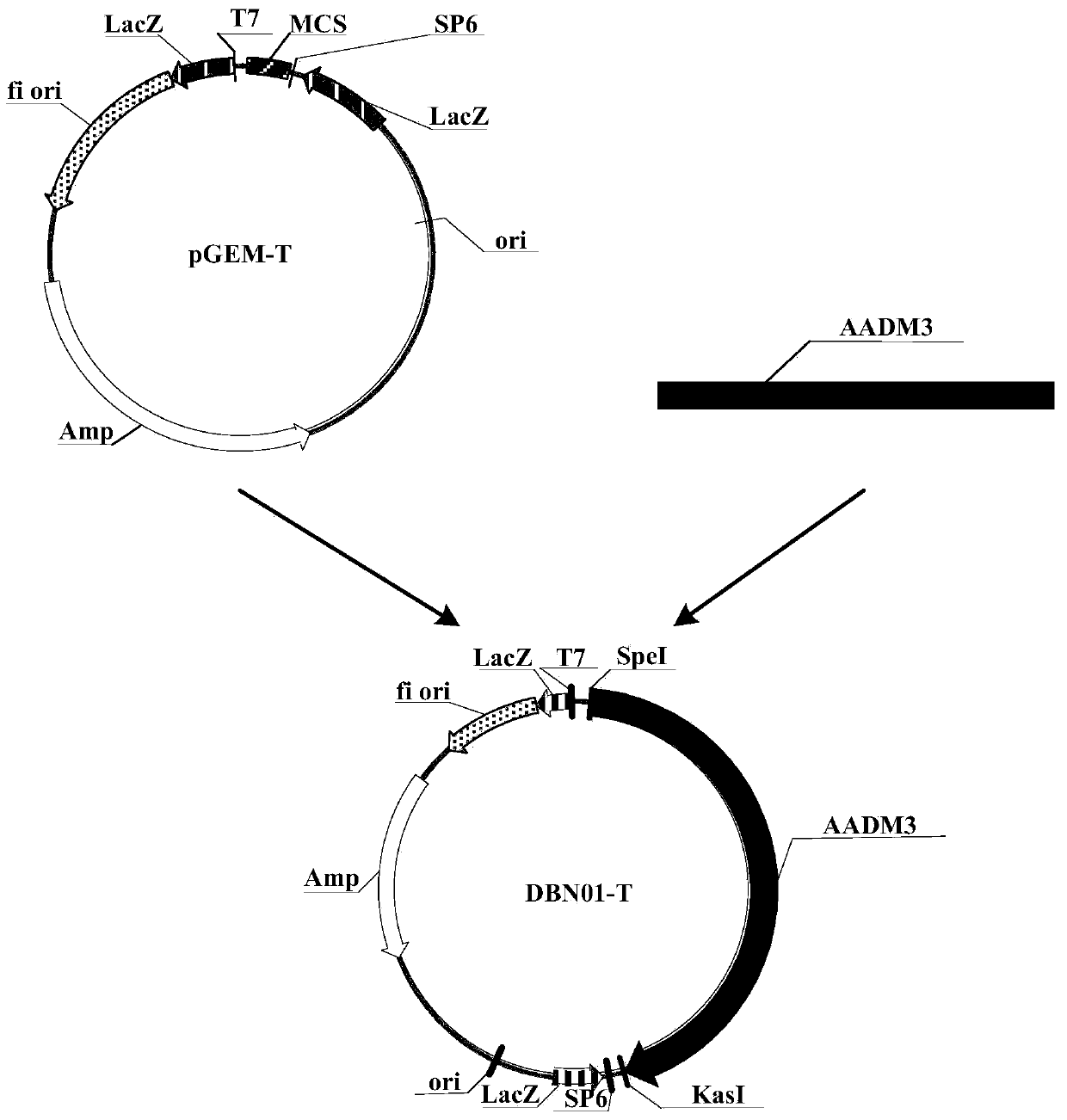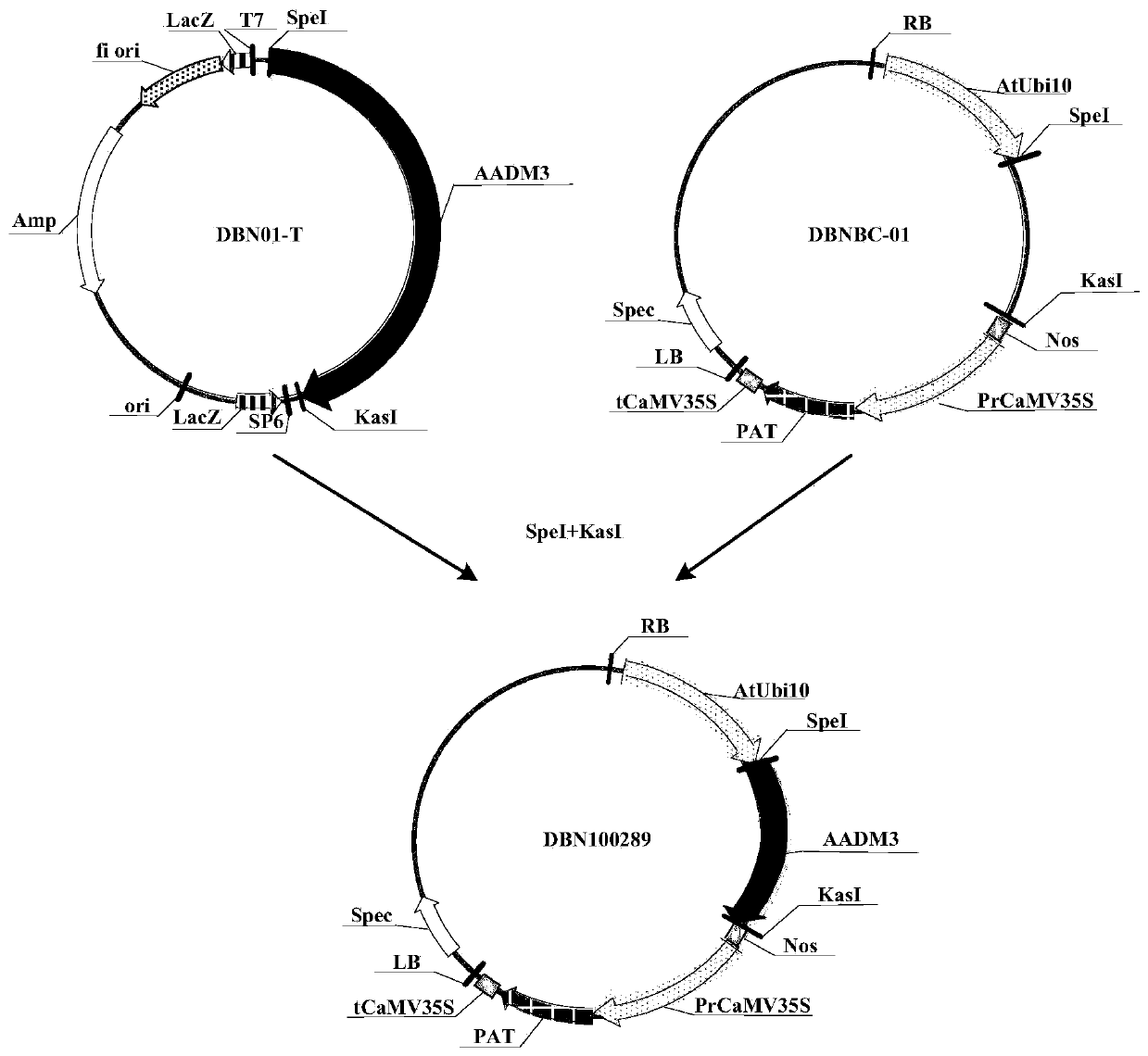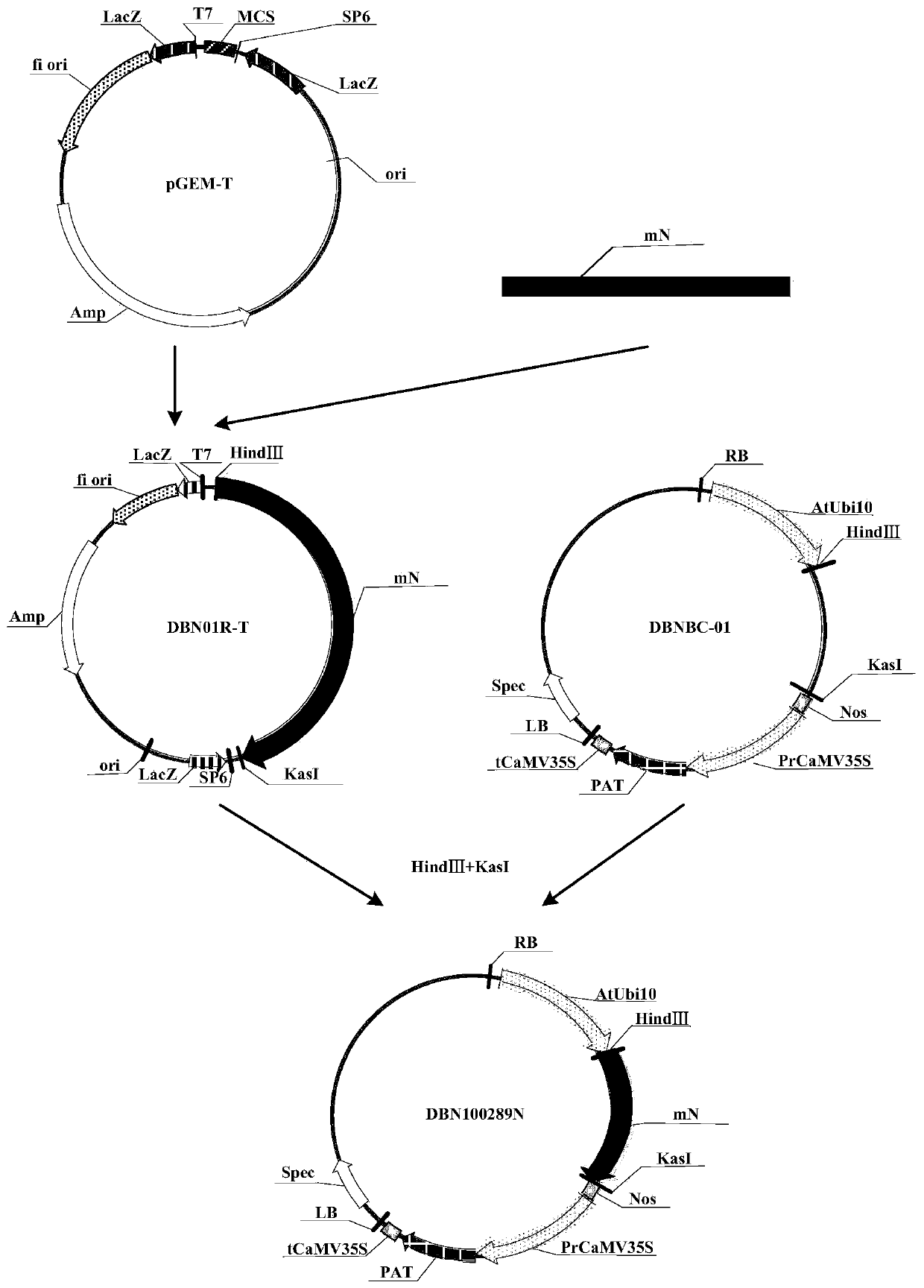Herbicide-resistant protein as well as encoding gene and application thereof
A technology for resistance genes and herbicides, applied in the directions of genetic engineering, plant genetic improvement, application, etc., can solve problems such as reports on the expression level of herbicide resistance proteins of AADM3 herbicide resistance that are not found in reports of herbicide tolerance, so as to improve flexibility, Highly flexible effects
- Summary
- Abstract
- Description
- Claims
- Application Information
AI Technical Summary
Problems solved by technology
Method used
Image
Examples
no. 1 example
[0093] The first embodiment, the acquisition and synthesis of AADM3 gene sequence
[0094] 1. Obtain AADM3 gene sequence
[0095] The amino acid sequence (292 amino acids) of the AADM3 herbicide resistance protein is shown in SEQID NO: 2 in the sequence listing; the amino acid sequence (292 amino acids) corresponding to the AADM3 herbicide resistance protein is obtained according to the plant preference codon amino acid) nucleotide sequence (879 nucleotides), as shown in SEQ ID NO:1 in the sequence listing.
[0096] 2. Synthesize the above-mentioned AADM3 nucleotide sequence
[0097] The AADM3 nucleotide sequence (shown as SEQ ID NO: 1 in the sequence listing) was synthesized by Nanjing KingScript Biotechnology Co., Ltd.; the 5' of the synthesized AADM3 nucleotide sequence (SEQ ID NO: 1) A SpeI restriction site is also connected to the end, and a KasI restriction site is also connected to the 3' end of the AADM3 nucleotide sequence (SEQ ID NO: 1).
no. 2 example
[0098] The second embodiment, construction of Arabidopsis recombinant expression vector and transformation of recombinant expression vector into Agrobacterium
[0099] 1. Construction of Arabidopsis thaliana recombinant cloning vector DBN01-T containing AADM3 nucleotide sequence
[0100] The synthetic AADM3 nucleotide sequence was ligated into the cloning vector pGEM-T (Promega, Madison, USA, CAT: A3600), and the operation steps were carried out according to the instructions of the pGEM-T vector produced by Promega Company to obtain the recombinant cloning vector DBN01-T, which Build process such as figure 1 Shown (wherein, Amp represents the ampicillin resistance gene; f1 represents the replication origin of phage f1; LacZ is the LacZ start codon; SP6 is the promoter of SP6 RNA polymerase; T7 is the promoter of T7 RNA polymerase; AADM3 is the nucleoside of AADM3 acid sequence (SEQ ID NO: 1); MCS is a multiple cloning site).
[0101] Then, the recombinant cloning vector DBN0...
no. 3 example
[0111] The third embodiment, the acquisition of Arabidopsis plants transferred to the AADM3 nucleotide sequence
[0112] Wild-type Arabidopsis seeds were suspended in 0.1% agarose solution. Suspended seeds were stored at 4°C for 2 days to fulfill the need for dormancy to ensure simultaneous seed germination. Mix horse manure with vermiculite and subirrigate with water until moist, allowing the soil mixture to drain for 24 hours. The pretreated seeds were planted on the soil mixture and covered with a moisture hood for 7 days. Let the seeds germinate and keep the light intensity at 120-150μmol / m at constant temperature (22°C) and constant humidity (40-50%) 2 Plants were grown in the greenhouse under long-day conditions (16 h light / 8 h dark) of 2 sec. Start by watering the plants with Hoagland's nutrient solution, followed by deionized water, keeping the soil moist but not soggy.
[0113] Transform Arabidopsis using the flower soak method. Inoculate one or more 15-30ml prec...
PUM
 Login to view more
Login to view more Abstract
Description
Claims
Application Information
 Login to view more
Login to view more - R&D Engineer
- R&D Manager
- IP Professional
- Industry Leading Data Capabilities
- Powerful AI technology
- Patent DNA Extraction
Browse by: Latest US Patents, China's latest patents, Technical Efficacy Thesaurus, Application Domain, Technology Topic.
© 2024 PatSnap. All rights reserved.Legal|Privacy policy|Modern Slavery Act Transparency Statement|Sitemap



